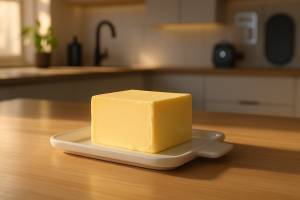 If you’ve been in bed for 20 mins but can’t get to sleep, it’s time to get out of bed!
If you’ve been in bed for 20 mins but can’t get to sleep, it’s time to get out of bed!
- Do something relaxing with little to low light. Go back to bed after 30 minutes or so (or sooner if you start feeling sleepy).
- Avoid checking your phone.
- Use relaxation techniques: instead of focusing on sleep, bring your attention to trying to relax your body.
- Tell yourself to stay awake: this is called paradoxical intention. Research has found that people who practiced paradoxical intention fell asleep faster than those who didn’t!
Diaphragmatic breathing:
- Lying down, place one hand on chest, other at the top of your belly, below your rib cage. Inhale through nose so your belly pushes expands. Your chest should remain still.
- Keeping chest still, tighten stomach muscles & exhale through pursed lips (the way you might hold your lips when you whistle).
- Repeat. This may take some practice. Start with I min when you get into bed, then increase with practice.
Autogenic training:
- Start with a few mins diaphragmatic breathing
- Next, bring your attention to your feet, then slowly repeat to yourself six times, “my feet are very heavy, I am completely calm.”
- Repeat moving your focus to parts of body, from feet to head, repeating each phrase about heaviness and warmth.
Good sleep starts in your day
- Get lots of natural sunlight. Especially daylight early in the day can help regulate & reset your circadian rhythm. If natural light isn’t an option, light therapy boxes are an alternative.
- Movement: physical exercise regulates energy use & body temperature. Avoid intense exercise within a few hours of bedtime.
- Curb caffeine intake past 1 pm
- Be mindful of alcohol as it reduces sleep quality
- Time dinner: big meals can make it harder to fall asleep, give your body enough time to begin digesting before hitting the hay.
- Bed is reserved for sleep & intimacy: it’s tempting to work in bed, watch movies & other activities, but this conditions your body & brain to associate your bed with activities other than sleep.
Bedtime rituals
Give yourself minimum 30 mins, if possible I hour to wind down from the day. Before sleep, schedule in activities that help bring your nervous system to a state of calm, for example:
- Reading
- Yoga poses like child’s pose
- Sleep playlist with soothing music
- Minimise Lights & blue light: blue light emitted from screens (TV, phone, laptops etc) can block melatonin production, a hormone that promotes sleep. Minimising bright lights can help you transition to feeling calm and ready for sleep.
- Self-massage can activate the vagus nerve by applying pressure to certain parts of the body. Gently massage around the neck, ears, wrist, hands, and feet.
- Activate the Parasympathetic Nervous System: Touch Your Lips: lips have parasympathetic fibres throughout them, so touching them activates them can provide calming effects. • Weighted blankets/eye masks: weighted input provides proprioception which has a calming & organising effect on the brain and body.
Lock in your schedule
- Set a regular sleep/wake schedule: Consistency is needed for your body to fall into a sleep rhythm. Choose realistic sleep & wake up times and stick with them, even on weekends. Prioritise time: working back from your wake up time, you want to make sure you’re getting enough sleep (hours) each night. 8 hours should be the absolute minimum, anything less than 7 hours, shows objective impairments in your brain and your body.
- Time naps: the ideal length for naps is 20-25 mins. Longer than that, you fall into a deeper sleep cycle, which lasts for about 90 minutes. This means when you wake up you’ll feel groggy. Baby steps! Any change takes time to adjust. Change sleep schedule over a period of time, to allow your body to get used to the new schedule!
Create your sleep friendly bedroom
- Minimise Light: light exposure can throw off your sleep & circadian rhythm. Block out curtains & eye masks can present light from interrupting your sleep.
- Reduce noise input: Sounds as low as 30 decibels impact sleep, for comparison, traffic noises are approx 70 dB. Your brain & body is tuning into the environment still while you’re asleep, so noise can wake you even if it’s not ‘loud’. Earplugs or white noise machines are great to reduce noise input.
- Keep it cool: It’s tempting to heat your room before you jump into bed, but research shows that the optimal temperature for falling and maintaining sleep is 18.3°C (65 F). Your body naturally cools while you’re sleeping, but having a cool room will allow you to fall asleep more easily.
- Soothing scents: Make your room inviting & calming with familiar or soothing scents like lavender.
Chicken or egg?
It’s hard to pinpoint whether anxiety or sleep disruptions comes first, but researchers found the relationship between sleep issues and anxiety is bidirectional. Lack of sleep can cause/increase anxiety & anxiety disrupts sleep. Studies have found those who experience various types of anxiety (generalised, OCD, PTSD, panic) are more likely to experience sleep reactivity when under stress. Research shows that anxiety may impact rapid eye movement (REM) sleep, which involves the most vivid dreaming, leading to vivid and disturbing dreams (nightmares), increasing fear & anxiety of sleep.
Article continued below
The connection between anxiety and sleep
Anxiety is a universal emotion & it would be maladaptive not to experience it! It’s an important part of the response to a stressor, ie, a threat, to psychological or the physiological survival. If you experience high amounts or ongoing stress in your life, you might also notice that your sleep is often impacted. Whether that’s struggling to fall asleep or stay asleep, anxiety keeps your brain active instead of settling down into restorative sleep. This creates a cycle, as lack of sleep lowers emotional resilience and increases stress hormones, continuing the cycle of anxiety and sleep deprivation.






